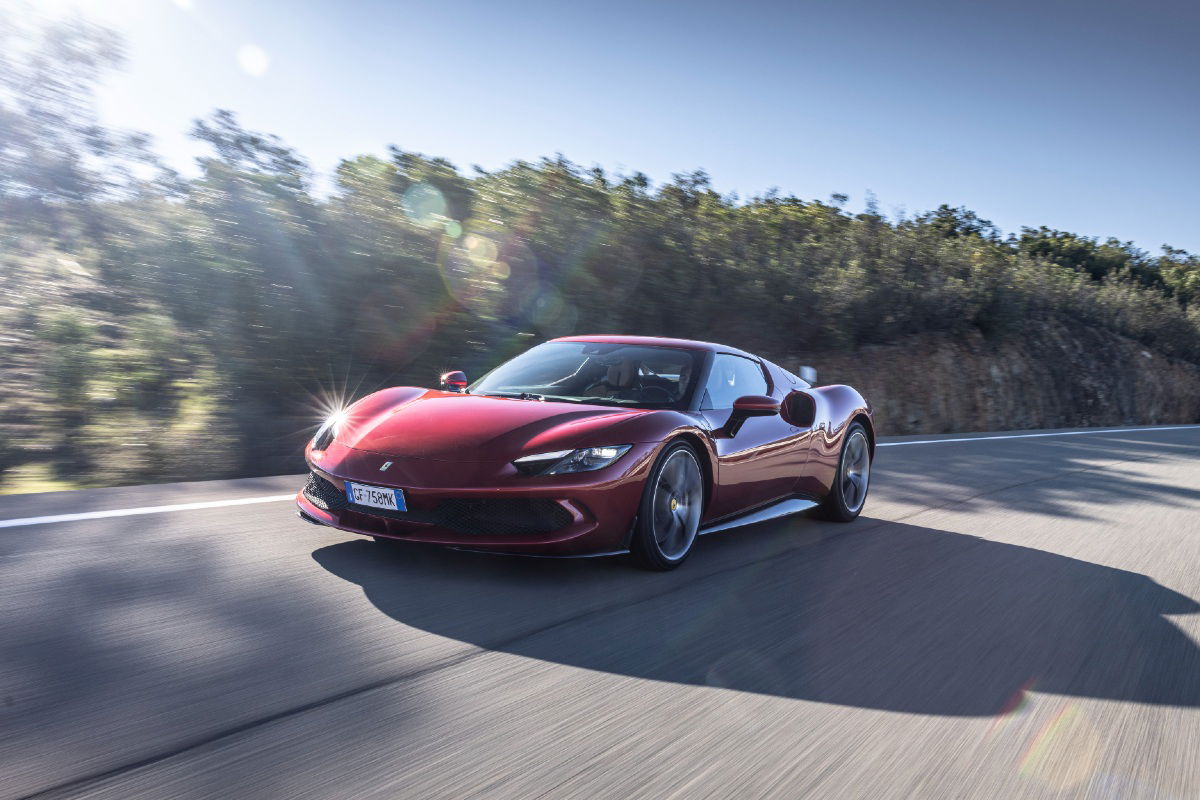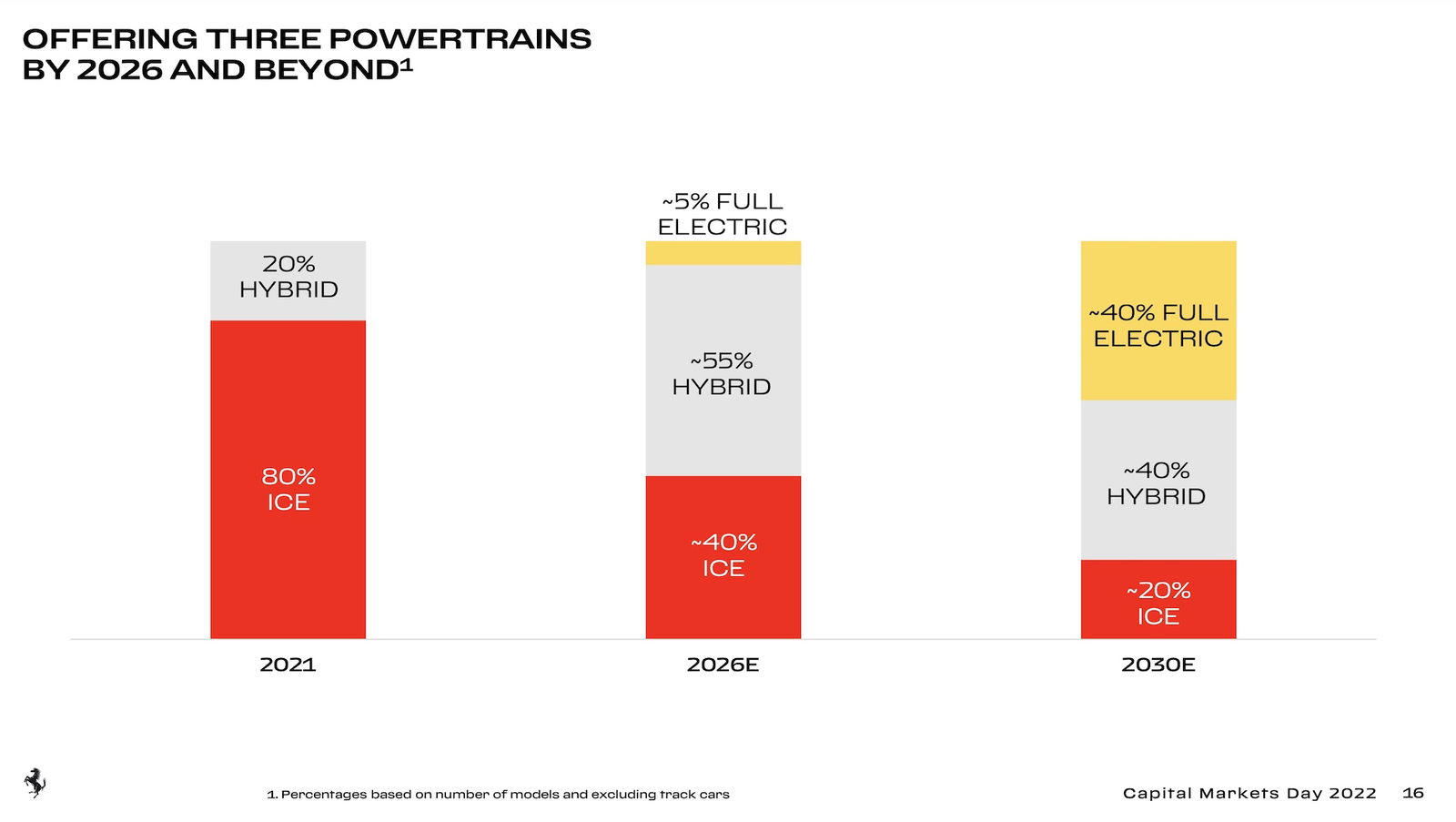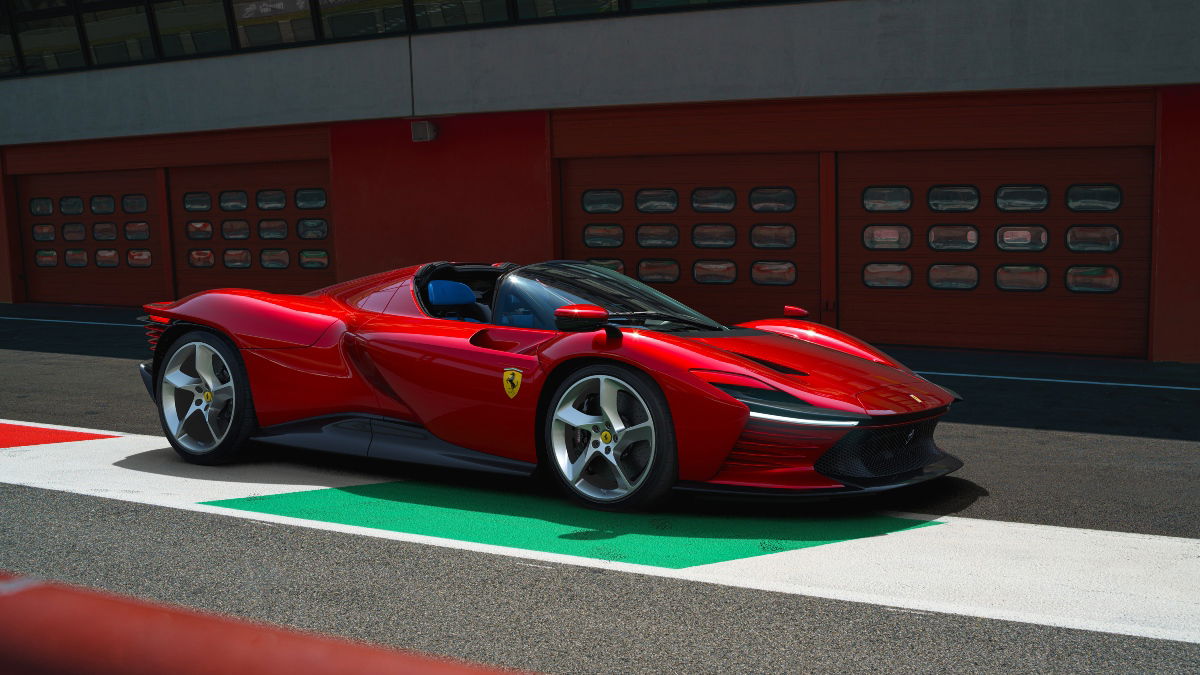
Ferrari is aiming to have more than half of its range electrified by 2026 and by the end of the decade it wants 40 per cent of its models to be all-electric.
This is the major takeaway from the brand’s Capital Markets Day, held overnight in Italy, where the brand outlined its future to investors and the media. The change is a major departure from the brand’s current position, with only 20 per cent of its cars – the 296 GTB and SF90 Stradale – being hybrid and the rest of the range still powered entirely by internal combustion.
To achieve this massive change the brand has committed to launching 15 new models between 2023 and 2026. All future models will be built on two vehicle architectures, a mid-engine layout for sports cars like the 296 GTB and SF90, and a front-mid-engine layout for the brand’s GT cars and its long-awaited SUV – the Purosangue.

In fact, the new SUV has had its launch date confirmed by Ferrari CEO Benedetto Vigna. The long-awaited Purosangue has been confirmed to launch in September and will be powered by a V12 engine to ensure it lives up to the brand’s reputation for creating the ultimate in performance vehicles. Given the push for more hybrid models, it’s also likely that the new Bentley Bentayga rivalling offering will come with a hybrid powertrain too.
While the addition of an SUV will no doubt be a boost to the brand’s sales numbers and financial bottom line, it will be a major departure for a brand that has, until now, focused almost entirely on two-door sports cars.
To compensate for any questions around its performance pedigree, Ferrari has confirmed that it will build a new ‘supercar’ to replace the LaFerrari, taking lessons from both its Formula 1 and Le Mans Hypercar programs.

The company also seemed to confirm that its V12 engine, uninhibited by hybrid additions, will live on in its Icona series of low-volume, special edition models – such as the recently released Daytona SP3.
Ferrari had already confirmed it would launch an all-electric supercar by 2025.
The company also confirmed it would limit all driving assistance systems to what’s known as ‘Level 2’ or ‘Level 2+’, which means the brand won’t offer a ‘self-driving car’. This will be done “in order to preserve all the extraordinary emotions reserved for the driver”, according to the company’s statement.


















Discussion about this post